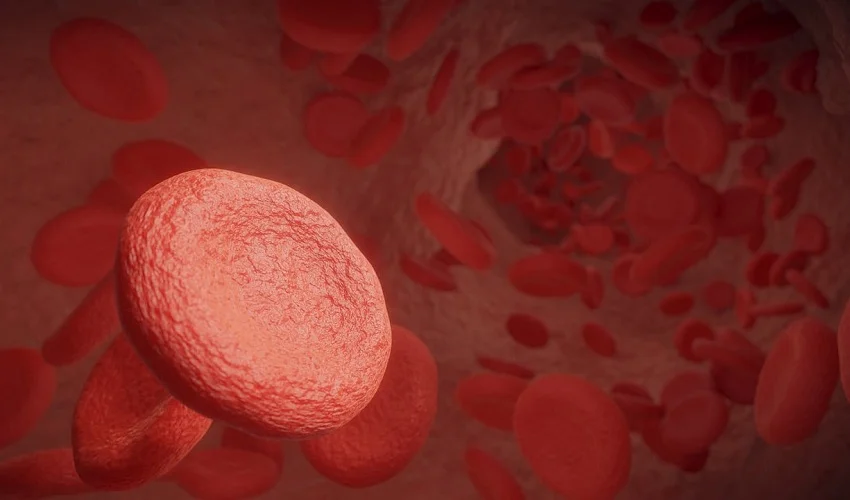Plaque buildup in the arteries, known as atherosclerosis, is a natural process that occurs with age. However, the severity and progression of this condition are largely influenced by lifestyle, genetics, and your overall health. Many people wonder if it’s possible to completely avoid or reverse plaque buildup, especially as they get older. This article explores the science behind plaque formation and what you can do to keep your arteries healthy as you grow older.
What Is Plaque and Why Does It Form?
Plaque is a mix of cholesterol, fats, calcium, and other substances that build up on the walls of arteries. Over time, this buildup of plaque can restrict blood flow and lead to complications such as heart attacks or brain strokes.
Here are some important factors that may contribute to plaque formation:
- Aging: As we age, arteries naturally become less elastic and more prone to damage, which can facilitate plaque formation.
- Lifestyle Factors: Diets high in saturated fats, lack of exercise, smoking, and chronic stress accelerate the process.
- Genetics: Some people are genetically more predisposed to high cholesterol levels, making them more susceptible to plaque buildup.
- Inflammation: Chronic inflammation in the body can damage artery walls, thereby creating a surface for plaque to accumulate.
Can Plaque Buildup Be Avoided?
While some degree of arterial changes is inevitable with aging, the progression of plaque buildup can be slowed or even prevented in many cases. Here’s how you can do this:
- Maintain a Heart-Healthy Diet: Focus on foods that are rich in soluble fiber (like oats, beans, and flaxseeds), omega-3 fatty acids (found in fatty fish and walnuts), and plant sterols (available in fortified foods). Limit intake of saturated fats and eliminate trans fats.
- Exercise Regularly: Aerobic activities like walking, jogging, or cycling improve blood flow, reduce inflammation, and help maintain healthy cholesterol levels.
- Control Cholesterol: Aim for LDL cholesterol levels below 100 mg/dL, or even lower if you’re at higher risk of cardiovascular disease.
- Manage Stress: Chronic stress raises cortisol levels, which can contribute to arterial damage and plaque buildup. Practice mindfulness, yoga, or deep breathing exercises.
- Avoid Smoking: Smoking accelerates atherosclerosis and damages arterial walls.
Can Plaque Be Reversed?
Once plaque forms, completely removing it is unlikely, especially if it has hardened (calcified). However, soft plaques can sometimes shrink, and both types of plaque can be stabilized to reduce their risk of causing heart attacks or strokes.
Key Strategies to Address Existing Plaque
- Dietary Changes:
- Increase soluble fiber to help reduce LDL cholesterol.
- Incorporate healthy fats from sources like olive oil, avocados, and fatty fish.
- Avoid refined sugars and processed foods, which can worsen inflammation and cholesterol levels.
- Exercise:
- Regular aerobic exercise promotes better blood flow, reduces inflammation, and helps increase HDL (“good” cholesterol), which aids in clearing excess cholesterol from arteries.
- Medications:
- Statins and other cholesterol-lowering medications can significantly reduce LDL levels and stabilize plaque.
- PCSK9 inhibitors may be prescribed for individuals with very high LDL levels or genetic predispositions.
- Weight Management:
- Losing visceral fat reduces inflammation and improves cholesterol profiles, further slowing plaque progression.
Why Does LDL Cholesterol Matter?
Low-density lipoprotein (LDL) cholesterol, often called “bad cholesterol,” plays a significant role in plaque formation. Even if you’re active and eat well, your LDL levels may remain high due to genetic factors or overproduction by the liver. It’s crucial to monitor and manage LDL levels to minimize long-term cardiovascular risks.
How Exercise Helps Plaque Management
Exercise is one of the most effective ways to maintain arterial health. Here’s how it works:
- Improves Blood Flow: Exercise stimulates the production of nitric oxide, which keeps arteries flexible and prevents cholesterol from sticking to arterial walls.
- Reduces Inflammation: Regular physical activity lowers systemic inflammation, which contributes to plaque formation.
- Boosts HDL Cholesterol: Higher HDL levels help remove excess cholesterol from the bloodstream, slowing plaque accumulation.
Takeaway: Preventing and Managing Plaque Buildup
Plaque buildup is a natural process to some extent, but its progression can often be slowed or minimized with the right interventions. Key takeaways include:
- Focus on a heart-healthy diet rich in fiber, healthy fats, and plant-based foods.
- Engage in regular aerobic exercise to improve cardiovascular fitness and cholesterol levels.
- Monitor LDL cholesterol levels and consider medications if lifestyle changes aren’t enough.
- Manage stress and avoid smoking to protect arterial health.
While hardened plaque cannot be dissolved, its effects can be mitigated, and soft plaques can often shrink with sustained effort. If you take proactive steps, you can maintain healthy arteries and reduce your risk of heart disease as you age.




